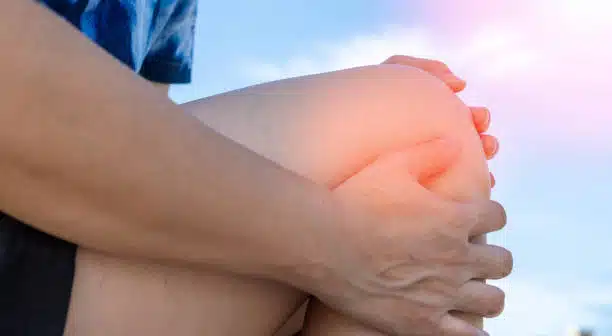
Our knee has small fluid-filled sacs that ensure less friction between the parts of the knee joints, like skin and tendon, and tendon and bone. These sacs are called bursae. Excessive pressure on these sacs – either from a direct blow or repetitive use – causes inflammation and swelling of the bursae, a condition known as bursitis.
Knee bursitis can cause debilitating pain, which can limit your activities. However, the right treatment approach can relieve knee bursitis symptoms and regain your knee mobility.
Here is a comprehensive guide about home measures and medical interventions that can help in treating bursitis knee.
Rest and Protect
Knee bursitis often improves over time with rest and protection. So, discontinue any activities like kneeling and prolonged sitting, which apply direct pressure on the knee and can worsen knee bursitis symptoms. It’s best to use knee cushions or pads to protect your knee.
Icing
Pain associated with knee bursitis responds well to ice therapy. Apply ice packs or a pack of frozen vegetables on your knee for at least 15 to 20 minutes every 3 to 4 hours for 3 days or until the pain disappears. Remember to wrap ice packs or bags of frozen vegetables in a towel to avoid frostbite.
Compression
Swelling and inflammation of the bursitis of the knee can also get better with a knee sleeve or compressive wrap.
Elevation
Prop up your leg whenever possible to promote blood flow to the bursitis knee and reduce swelling.
Oral Pain Medications
Oral pain medications can also help relieve pain and reduce knee inflammation. Take nonsteroidal anti-inflammatory drugs (NSAIDs) like ibuprofen or naproxen whenever you feel pain.
Injections
Knee pain and swelling that don’t improve with home measures may get better with cortisone shots. These injections can be administered by your orthopedic doctor to reduce inflammation and alleviate knee pain.
The anti-inflammatory property of corticosteroids subsides on knee inflammation rapidly and provides relief from pain and swelling associated with knee inflammation.
Physical Therapy
Once the initial inflammation is reduced through rest, icing, elevation, and compression, your physical therapist may develop a program of stretching and light strengthening exercises to restore the full range of motion of the knee joint and improve knee strength.
Aspiration
Aspiration is a medical procedure in which your orthopedic doctor inserts a needle into the affected bursa and draws the excess fluid into the syringe. You can expect short-term pain and swelling after the procedure.
After aspiration, wear a knee immobilizer for a short period to help minimize the risk of recurring swelling.
Antibiotics Therapy
The fluid that your orthopedic doctor aspirates from your inflamed bursa can be used to test if the bursa is septic (infected) or not.
If your orthopedic doctor finds the fluid is septic, they will likely recommend oral antibiotics. In some cases, antibiotics are administered through an IV line.
Surgery
Chronic bursitis or recurrent bursitis that fails to improve with all the aforementioned treatment methods may warrant surgery.
During the surgical procedure, your orthopedic doctor removes the inflamed bursa to provide you with lasting relief.
Bursitis Knee Treatment in Bismarck, ND
The symptoms of bursitis knee often resemble those of knee arthritis. So, it’s best to get your knee symptoms evaluated by an orthopedic doctor.
At The Bone & Joint Center, we have a team of board-certified orthopedic doctors dedicated their careers to providing a comprehensive range of treatments to treat all types of musculoskeletal conditions and injuries. Our orthopedic doctor thoroughly evaluates the exact underlying cause of your unique orthopedic condition and effectively addresses it to provide you with lasting relief.
If you would like to know more about the knee bursitis treatments we offer, call us today at (701) 946-7400 / (866) 900-8650 or schedule an appointment through this online request form.

